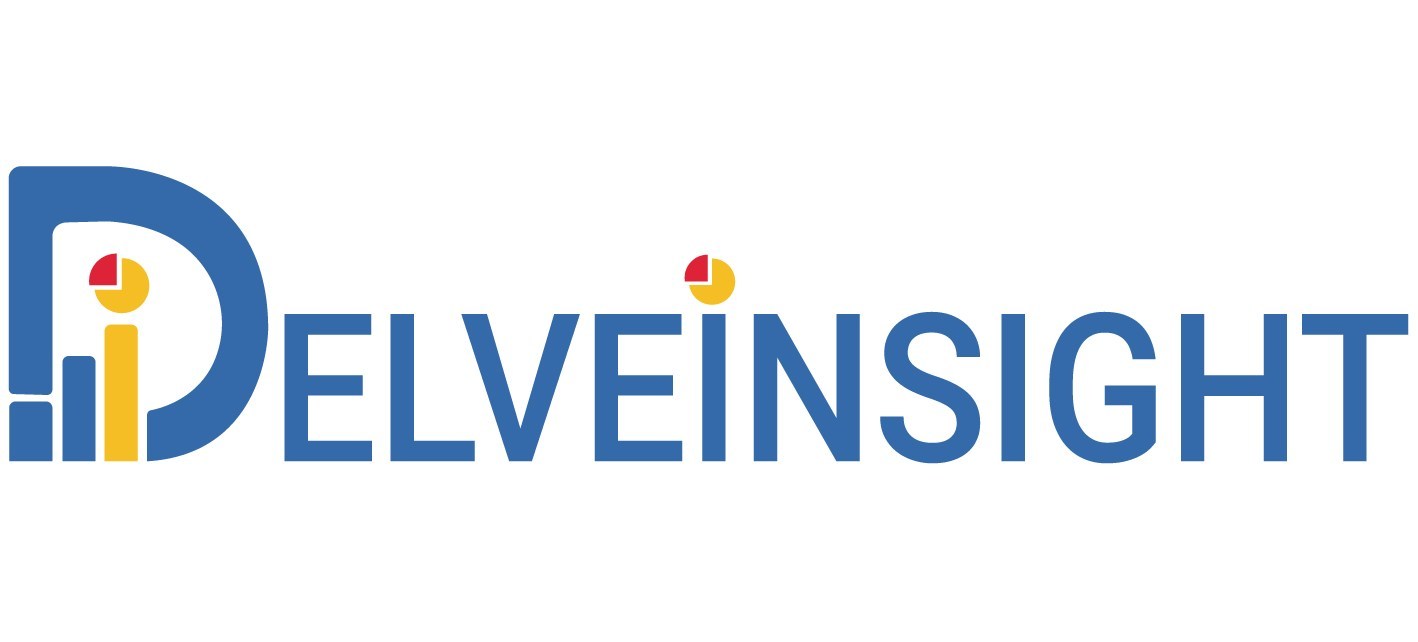The astrocytoma market size is predicted to change in the coming years owing to the increasing incidence of brain tumors, and advancements in diagnostic techniques. LAS VEGAS , Aug. 21, 2024 /PRNewswire/ -- DelveInsight's Astrocytoma Market Insights report includes a comprehensive understanding of current treatment practices, astrocytoma emerging drugs, market share of individual therapies, and current and forecasted market size from 2020 to 2034, segmented into 7MM [ the United States , the EU4 ( Germany , France , Italy , and Spain ) and the United Kingdom , and Japan ].
Key Takeaways from the Astrocytoma Market Report According to DelveInsight's analysis, the market size for astrocytomas is expected to grow significantly by 2034. The US is estimated to account for the highest incident cases of astrocytoma in the 7MM. Leading astrocytoma companies such as Orbus Therapeutics, Kazia Therapeutics , and others are developing novel astrocytoma drugs that can be available in the astrocytoma market in the coming years.

The promising astrocytoma therapies in the pipeline include Eflornithine, Paxalisib, and others. Discover which therapies are expected to grab the major astrocytoma market share @ Astrocytoma Market Report Astrocytoma Overview Astrocytoma is a type of cancer that originates in the astrocytes, star-shaped cells in the brain and spinal cord that support nerve cells. Symptoms of astrocytoma vary depending on its location and size but commonly include headaches, seizures, memory loss, and changes in personality or behavior.
Other symptoms may involve nausea, vision problems, and coordination difficulties. The exact cause of astrocytoma is not well understood, but it is believed to result from a combination of genetic mutations and environmental factors. Diagnosis typically involves a series of steps including neurological examinations, imaging tests such as MRI or CT scans, and biopsy procedures where a sample of the tumor is analyzed for cancerous cells.
Early detection and accurate diagnosis are crucial for determining the appropriate treatment plan, which may involve surgery, radiation therapy, and chemotherapy. Astrocytoma Epidemiology Segmentation The astrocytoma epidemiology section provides insights into the historical and current astrocytoma patient pool and forecasted trends for the 7MM. It helps recognize the causes of current and forecasted patient trends by exploring numerous studies and views of key opinion leaders.
The astrocytoma market report proffers epidemiological analysis for the study period 2020–2034 in the 7MM segmented into: Total Incident Cases Total Diagnosed Cases by Age Distribution Grade-Specific Cases Gender-specific Cases Line-wise Treated Cases Astrocytoma Treatment Market Astrocytoma treatment typically involves a multi-modal approach that includes surgery, radiation therapy, and chemotherapy, depending on the tumor's grade and location. Surgical resection is often the first line of treatment, aiming to remove as much of the tumor as possible while preserving neurological function. Complete resection is ideal, but in cases where the tumor is inoperable or only partially removable, surgery is followed by radiation therapy to target the remaining cancer cells.
For high-grade astrocytomas, such as glioblastomas, radiotherapy is usually combined with concurrent and adjuvant chemotherapy with temozolomide to improve survival rates. Adjuvant therapies include steroids like dexamethasone to manage swelling, chemotherapy such as temozolomide (TEMODAR) , and radiotherapy to target tumor cells. Bevacizumab may be used to hinder blood vessel recruitment by the tumor.
Off-label drugs like procarbazine hydrochloride may also be considered. Advances in treatment are also incorporating targeted therapies and immunotherapies. Targeted therapies, such as bevacizumab, focus on inhibiting the growth of blood vessels that supply the tumor, thereby restricting its growth.
Immunotherapies are designed to stimulate the patient's immune system to recognize and attack cancer cells more effectively. Additionally, clinical trials are exploring the use of novel agents and treatment protocols, including personalized medicine approaches based on the genetic profile of the tumor. These evolving strategies aim to improve outcomes, reduce side effects, and offer hope for patients with this challenging and often aggressive type of brain tumor.
To know more about astrocytoma treatment guidelines, visit @ Astrocytoma Management Astrocytoma Pipeline Therapies and Key Companies Some of the drugs in the pipeline include Eflornithine (Orbus Therapeutics), Paxalisib (Kazia Therapeutics) , and others. Eflornithine , also known as α-difluoromethylornithine (DFMO), targets ornithine decarboxylase (ODC), an enzyme vital for polyamine synthesis and cell growth. High levels of ODC are linked to certain cancers.
Inhibiting ODC with eflornithine has shown the potential to stop tumor growth and trigger cell apoptosis. Initially approved for treating African trypanosomiasis, topical eflornithine later received approval for reducing unwanted facial hair in women. The Phase III clinical trial aims to assess the effectiveness and safety of combining eflornithine with lomustine compared to lomustine alone in patients with recurrent or progressive anaplastic astrocytoma following radiation and temozolomide chemotherapy.
Kazia Therapeutics' lead program, paxalisib , is an investigational brain-penetrant inhibitor of the PI3K / Akt / mTOR pathway, which is being developed to treat multiple forms of brain cancer. Licensed from Genentech in late 2016, paxalisib is or has been the subject of ten clinical trials in this disease. A completed Phase II study in glioblastoma reported early signals of clinical activity in 2021, and a pivotal study in glioblastoma, GBM AGILE, has been completed with presentation of paxalisib arm data expected later in 2024 at a major medical conference.
Paxalisib was granted Orphan Drug Designation for glioblastoma by the FDA in February 2018 , and Fast Track Designation (FTD) for glioblastoma by the FDA in August 2020 . Paxalisib was also granted FTD in July 2023 for the treatment of solid tumour brain metastases harboring PI3K pathway mutations in combination with radiation therapy. In addition, paxalisib was granted Rare Pediatric Disease Designation and Orphan Drug Designation by the FDA for diffuse intrinsic pontine glioma in August 2020 , and for atypical teratoid / rhabdoid tumours in June 2022 and July 2022 , respectively.
The anticipated launch of these emerging therapies for astrocytoma are poised to transform the market landscape in the coming years. As these cutting-edge therapies continue to mature and gain regulatory approval, they are expected to reshape the astrocytoma market landscape, offering new standards of care and unlocking opportunities for medical innovation and economic growth. Discover more about astrocytoma drugs in development @ Astrocytoma Clinical Trials Astrocytoma Market Dynamics The dynamics of the astrocytoma market are expected to change in the coming years.
The increasing prevalence of brain tumors , including astrocytomas, is a significant driver, leading to a higher demand for effective treatments. Advancements in diagnostic techniques , such as imaging technologies and biomarker identification, have improved early detection and accurate diagnosis, thereby propelling market growth. Additionally, the development of novel therapeutic approaches , including targeted therapies and immunotherapies, offers promising treatment options and has attracted substantial investment in research and development.
The growing awareness about brain tumors and the availability of better healthcare infrastructure also contribute to the market expansion. Furthermore, supportive government initiatives and funding for cancer research enhance the overall market dynamics, fostering innovation and the introduction of new products in the astrocytoma treatment landscape. Furthermore, potential therapies are being investigated for the treatment of astrocytoma, and it is safe to predict that the treatment space will significantly impact the astrocytoma market during the forecast period.
Moreover, the anticipated introduction of emerging therapies with improved efficacy and a further improvement in the diagnosis rate are expected to drive the growth of the astrocytoma market in the 7MM. However several factors may impede the growth of the astrocytoma market. One of the primary challenges is the complexity and heterogeneity of astrocytoma tumors , which complicates the development of universally effective therapies.
Additionally, the high cost and lengthy duration of clinical trials required to establish the safety and efficacy of new treatments pose substantial financial and logistical hurdles for pharmaceutical companies. Regulatory challenges , including stringent approval processes and the need for extensive evidence, further delay the introduction of new therapies to the market. Limited awareness and understanding of astrocytoma among both healthcare providers and patients also contribute to underdiagnosis and suboptimal treatment, hindering market growth.
Moreover, the rarity of astrocytoma compared to other cancers can result in lower prioritization for research funding and pharmaceutical investment, limiting the availability of novel treatment options . Finally, reimbursement issues and variations in healthcare coverage can restrict patient access to advanced treatments, further exacerbating the market's barriers. Moreover, astrocytoma treatment poses a significant economic burden and disrupts patients' overall well-being and QOL.
Furthermore, the astrocytoma market growth may be offset by failures and discontinuation of emerging therapies , unaffordable pricing , market access and reimbursement issues , and a shortage of healthcare specialists . In addition, the undiagnosed, unreported cases and the unawareness about the disease may also impact the astrocytoma market growth. Astrocytoma Market Report Metrics Details Study Period 2020–2034 Coverage 7MM [the United States, the EU4 (Germany, France, Italy, and Spain) and the United Kingdom, and Japan].
Key Astrocytoma Companies Orbus Therapeutics, Denovo Biopharma, and others Key Pipeline Astrocytoma Therapies Eflornithine, DB102 (enzastaurin), and others Scope of the Astrocytoma Market Report Therapeutic Assessment: Astrocytoma current marketed and emerging therapies Astrocytoma Market Dynamics: Key Market Forecast Assumptions of Emerging Astrocytoma Drugs and Market Outlook Competitive Intelligence Analysis: SWOT analysis and Market entry strategies Unmet Needs, KOL's views, Analyst's views, Astrocytoma Market Access and Reimbursement Download the report to understand which factors are driving astrocytoma market trends @ Astrocytoma Market Trends Table of Contents 1. Astrocytoma Key Insights 2. Astrocytoma Report Introduction 3.
Astrocytoma Overview at a Glance 4. Astrocytoma Executive Summary 5 Astrocytoma Key Events 6 Epidemiology and Market Forecast Methodology 6. Disease Background and Overview 7.
Astrocytoma Treatment and Management 8. Astrocytoma Guidelines 9. Astrocytoma Epidemiology and Patient Population 10.
Patient Journey 11. Key Endpoints in Astrocytoma 12. Astrocytoma Marketed Drugs 13.
Astrocytoma Emerging Drugs 14. 7MM Astrocytoma Market Analysis 15. Market Access and Reimbursement 16.
KOL Views 17. Unmet Needs 18. SWOT Analysis 19.
Appendix 20. DelveInsight Capabilities 21. Disclaimer 22.
About DelveInsight Related Reports Astrocytoma Epidemiology Forecast Astrocytoma Epidemiology Forecast – 2032 report delivers an in-depth understanding of the disease, historical and forecasted epidemiology as well as the astrocytoma epidemiology trends. Astrocytoma Pipeline Astrocytoma Pipeline Insight – 2024 report provides comprehensive insights about the pipeline landscape, pipeline drug profiles, including clinical and non-clinical stage products, and the key astrocytoma companies, including Orbus Therapeutics, Kazia Therapeutics, among others. Anaplastic Astrocytoma Market Anaplastic Astrocytoma Market Insights, Epidemiology, and Market Forecast – 2032 report deliver an in-depth understanding of the disease, historical and forecasted epidemiology, as well as the market trends, market drivers, market barriers, and key anaplastic astrocytoma companies, including Orbus Therapeutics, Cothera Bioscience, Celgene, Wayshine Biopharm, Inc.
, OncoSynergy, AEterna Zentaris, Oncoceutics, DNAtrix, Novartis Pharmaceuticals, Curis, Inc., Everfront Biotech Co., Ltd.
, Pfizer, Kazia Therapeutics Limited, Bayer, Geneos Therapeutics, Cellix Bio, Mustang Bio, Deciphera Pharmaceuticals, Aveta Biomics, among others. Anaplastic Astrocytoma Pipeline Anaplastic Astrocytoma Pipeline Insight – 2024 report provides comprehensive insights about the pipeline landscape, pipeline drug profiles, including clinical and non-clinical stage products, and the key a naplastic astrocytoma companies, including Orbus Therapeutics, Cothera Bioscience, Celgene, Wayshine Biopharm, Inc., OncoSynergy, AEterna Zentaris, Oncoceutics, DNAtrix, Novartis Pharmaceuticals, Curis, Inc.
, Everfront Biotech Co., Ltd., Pfizer, Kazia Therapeutics Limited, Bayer, Geneos Therapeutics, Cellix Bio, Mustang Bio, Deciphera Pharmaceuticals, Aveta Biomics, among others.
About DelveInsight DelveInsight is a leading Business Consultant and Market Research firm focused exclusively on life sciences. It supports pharma companies by providing comprehensive end-to-end solutions to improve their performance. Get hassle-free access to all the healthcare and pharma market research reports through our subscription-based platform PharmDelve .
Contact Us Shruti Thakur [email protected] +14699457679 www.delveinsight.
com Logo: https://mma.prnewswire.com/media/1082265/3528414/DelveInsight_Logo.
jpg.


















